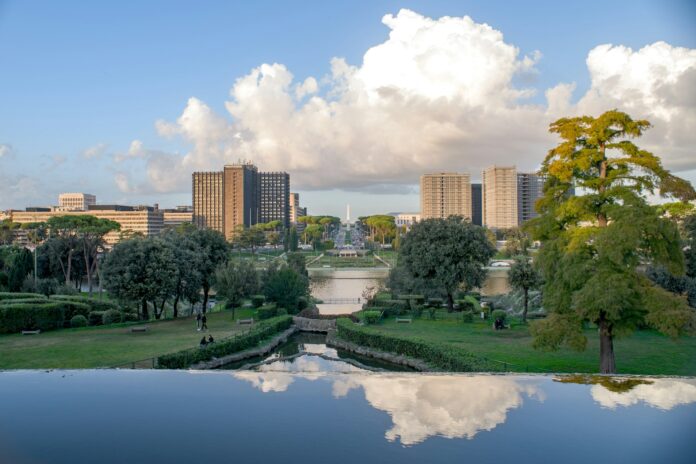The city of Rome is a living testament to ancient history, where the grandeur of the Roman Empire comes to life through its magnificent landmarks. A guided tour of the Colosseum, Roman Forum, and Palatine Hill offers an unparalleled opportunity to explore three of Rome’s most iconic sites in one comprehensive experience. This tour immerses visitors in the splendor, history, and culture of Ancient Rome, taking them back thousands of years to witness the heartbeat of one of the most influential civilizations in human history.
1. Introduction to Ancient Rome
Rome, often referred to as the “Eternal City,” was the heart of one of the greatest empires the world has ever seen. Its influence stretched across Europe, North Africa, and the Middle East. At its peak, Rome was not only a military power but also a hub of cultural, architectural, and intellectual achievements. The remains of this vast empire are scattered across the city, with the Colosseum, Roman Forum, and Palatine Hill being the most visited and revered landmarks.
A guided tour through these ancient monuments provides an in-depth look at Rome’s political, social, and architectural advancements, offering visitors insight into the daily lives of Romans as well as the events that shaped the empire.
2. The Colosseum: Rome’s Most Iconic Structure
A. Historical Overview
The Colosseum, also known as the Flavian Amphitheatre, is one of the most recognized structures in the world. Construction of the Colosseum began in AD 72 under the Emperor Vespasian and was completed in AD 80 by his son, Emperor Titus. It stands as a symbol of the power and grandeur of ancient Rome. The amphitheater was used for a variety of public spectacles, including gladiatorial contests, animal hunts, and mock naval battles.
B. Architectural Marvel
The Colosseum could hold up to 50,000 spectators, making it one of the largest amphitheaters of its time. It features an intricate system of vaults and arches, which allowed for the distribution of weight and created a strong yet flexible structure. Visitors can explore the arena floor, where gladiators once fought, and the hypogeum, the underground chambers where animals and fighters were kept before entering the arena.
C. Key Features
- The Arena Floor: Once covered with sand, this was the main stage for gladiatorial combat.
- The Hypogeum: The underground network of tunnels and chambers that housed animals and gladiators.
- The Spectator Stands: Divided by class, with the most privileged sitting closest to the action.
- The Archways: The Colosseum boasts 80 entrance arches, which allowed for efficient crowd management.
A guided tour will offer detailed explanations of how the Colosseum functioned, the types of events held there, and the lives of the gladiators who fought for their lives in the arena.
3. Roman Forum: The Heart of Political and Social Life
A. Historical Importance
The Roman Forum was the epicenter of political, social, and religious life in ancient Rome. Located just a short walk from the Colosseum, the Forum was home to important government buildings, temples, and public spaces. It served as a venue for political speeches, criminal trials, and gladiatorial matches, and was the focal point for Roman triumphal processions.
B. Key Sites within the Forum
- The Temple of Saturn: One of the oldest temples in the Forum, dedicated to the god of agriculture and wealth.
- The Arch of Septimius Severus: A triumphal arch built to commemorate the emperor’s victories in the Parthian wars.
- The Basilica of Maxentius: The largest building in the Forum, once used for public gatherings and legal proceedings.
- The Curia Julia: The Senate House, where Rome’s most powerful political decisions were made.
- The Rostra: A platform used by orators to address the public, including famous figures like Cicero.
C. A Walk Through History
A guided tour of the Roman Forum will take you through these and other important structures, providing context for how this area functioned as the heart of Roman life. The guide will share stories of political intrigue, public ceremonies, and the events that unfolded here, bringing the Forum’s history to life.
4. Palatine Hill: The Birthplace of Rome
A. Mythological Origins
According to Roman mythology, Palatine Hill is where the city of Rome was founded by Romulus, who, along with his twin brother Remus, was raised by a she-wolf in a cave known as the Lupercal. Palatine Hill is one of the most ancient parts of the city, and archaeological evidence suggests that it has been inhabited since at least 1000 BC.
B. Imperial Residences
In addition to its mythological significance, Palatine Hill was the location of the luxurious palaces of Roman emperors. The hill offers stunning views of both the Roman Forum and the Circus Maximus, where chariot races were held. The remains of the Domus Augustana and Domus Flavia, two of the grandest imperial palaces, can still be seen today.
C. Key Sites on Palatine Hill
- The House of Augustus: The home of Rome’s first emperor, Augustus, which is adorned with well-preserved frescoes.
- The Farnese Gardens: Beautiful Renaissance gardens that were laid out in the 16th century atop ancient ruins.
- The Stadium of Domitian: A large, open space that was likely used for private athletic events and garden parties by the emperor.
- The Palace of Tiberius: Another of the lavish residences built for the Roman emperors.
Palatine Hill offers a peaceful retreat from the bustling city below, and a guided tour will delve into the hill’s historical, cultural, and mythological significance.
5. Practical Information for the Tour
A. Duration and Schedule
The Colosseum, Roman Forum, and Palatine Hill Guided Tour typically lasts around 3-4 hours, depending on the level of detail provided by the guide and the pace of the group. Tours often begin at the Colosseum, continue through the Roman Forum, and conclude with a visit to Palatine Hill. Morning and afternoon tours are available, though it is advisable to book in advance due to the popularity of the sites.
B. What to Bring
- Comfortable walking shoes: The tour involves a significant amount of walking over uneven surfaces, especially in the Roman Forum and on Palatine Hill.
- Water and sunscreen: Rome can be quite hot, particularly in the summer months, so staying hydrated and protected from the sun is essential.
- Camera: The views from Palatine Hill, in particular, are spectacular, and you’ll want to capture the incredible architecture and landscapes.
C. Booking Information
To book this tour, visit Viator or any reputable tour provider. Some tours offer skip-the-line access, which is highly recommended to avoid the long queues, especially during peak tourist seasons.
6. Conclusion: A Journey Through Time
The Colosseum, Roman Forum, and Palatine Hill Guided Tour is an immersive experience that allows visitors to step back in time and explore the grandeur of Ancient Rome. Each site offers a unique window into the empire’s history—from the brutal gladiatorial contests in the Colosseum to the political maneuverings in the Roman Forum and the luxurious palaces on Palatine Hill.
Whether you’re an avid history enthusiast or simply someone looking to experience Rome’s cultural treasures, this guided tour provides unparalleled insight into the ancient world and is a must-see for any visitor to the Eternal City.
For more information on historical tours and travel experiences, visit Izase.
Disclaimer
This information is accurate at the time of publication. Please check with the tour provider for the latest schedules, prices, and booking conditions.
MORE FROM IZASE


